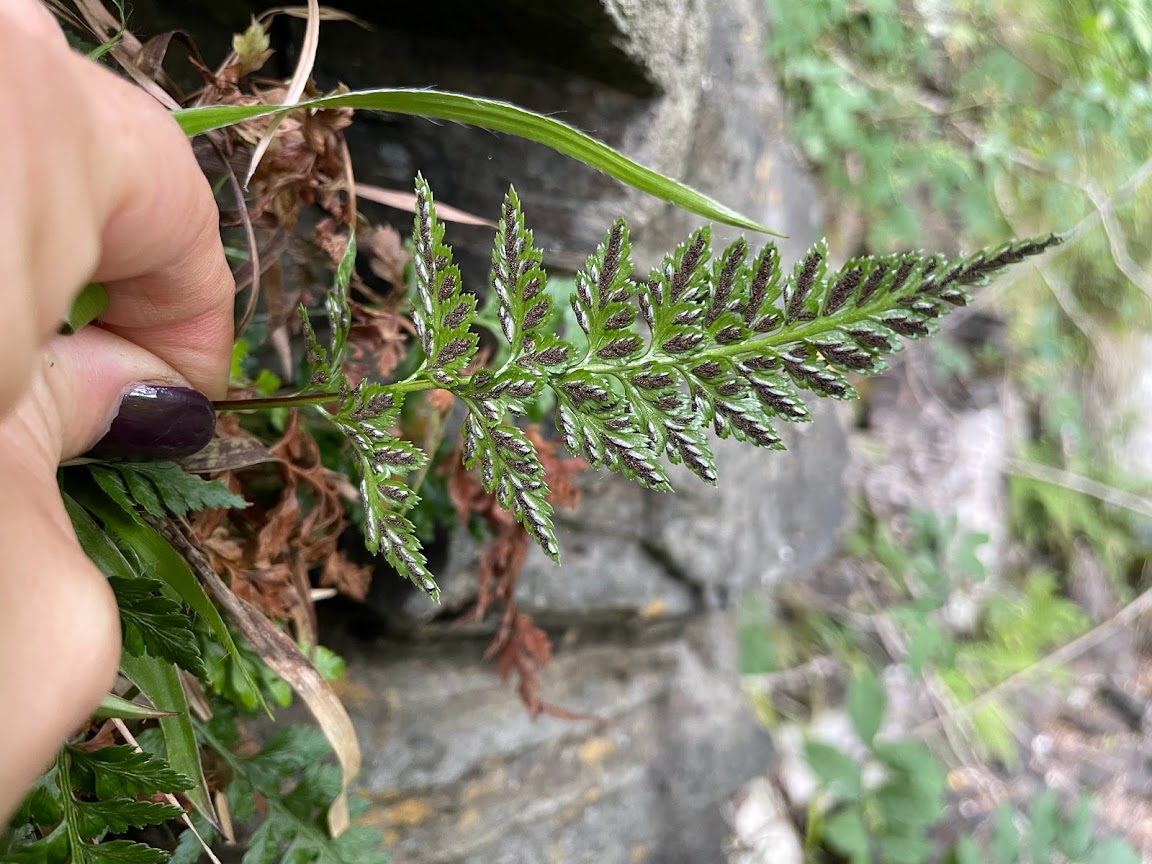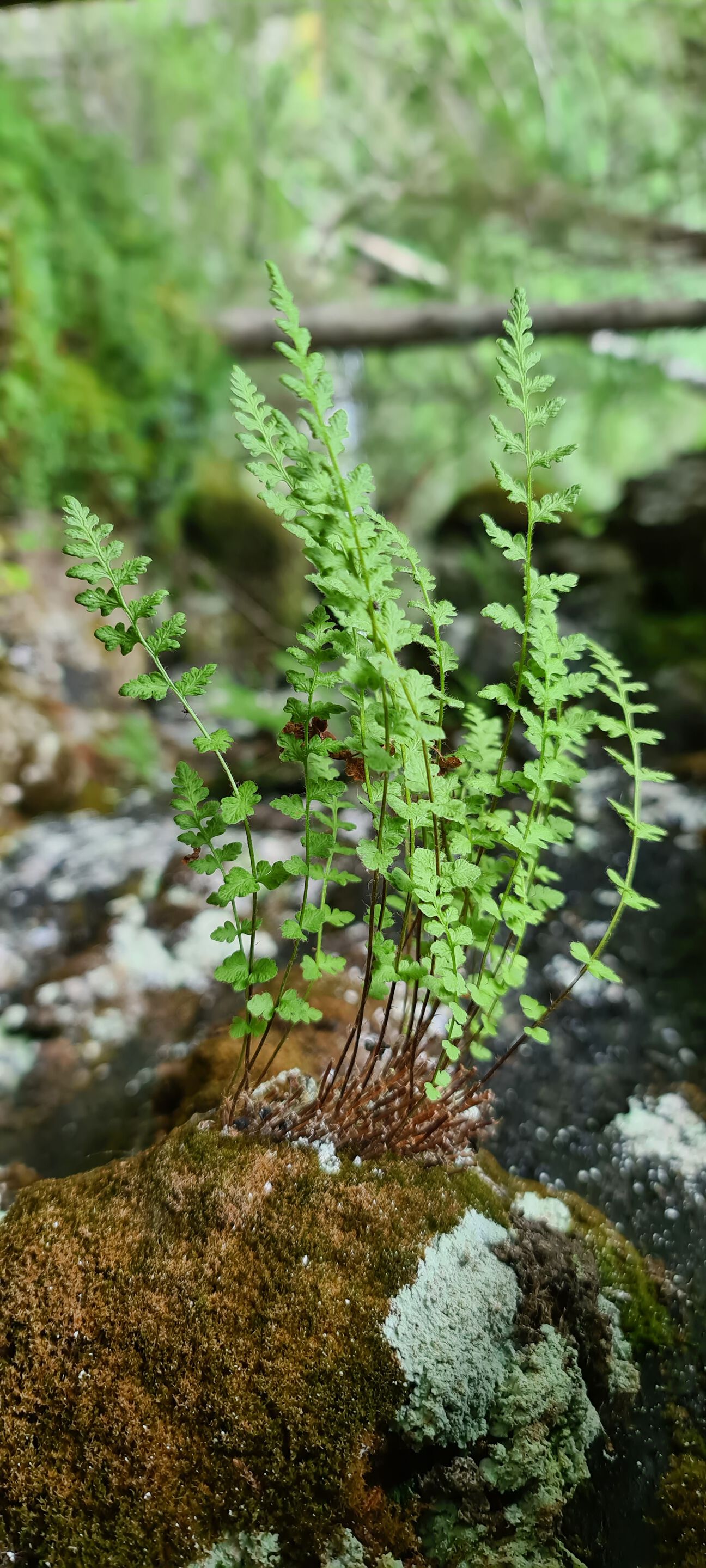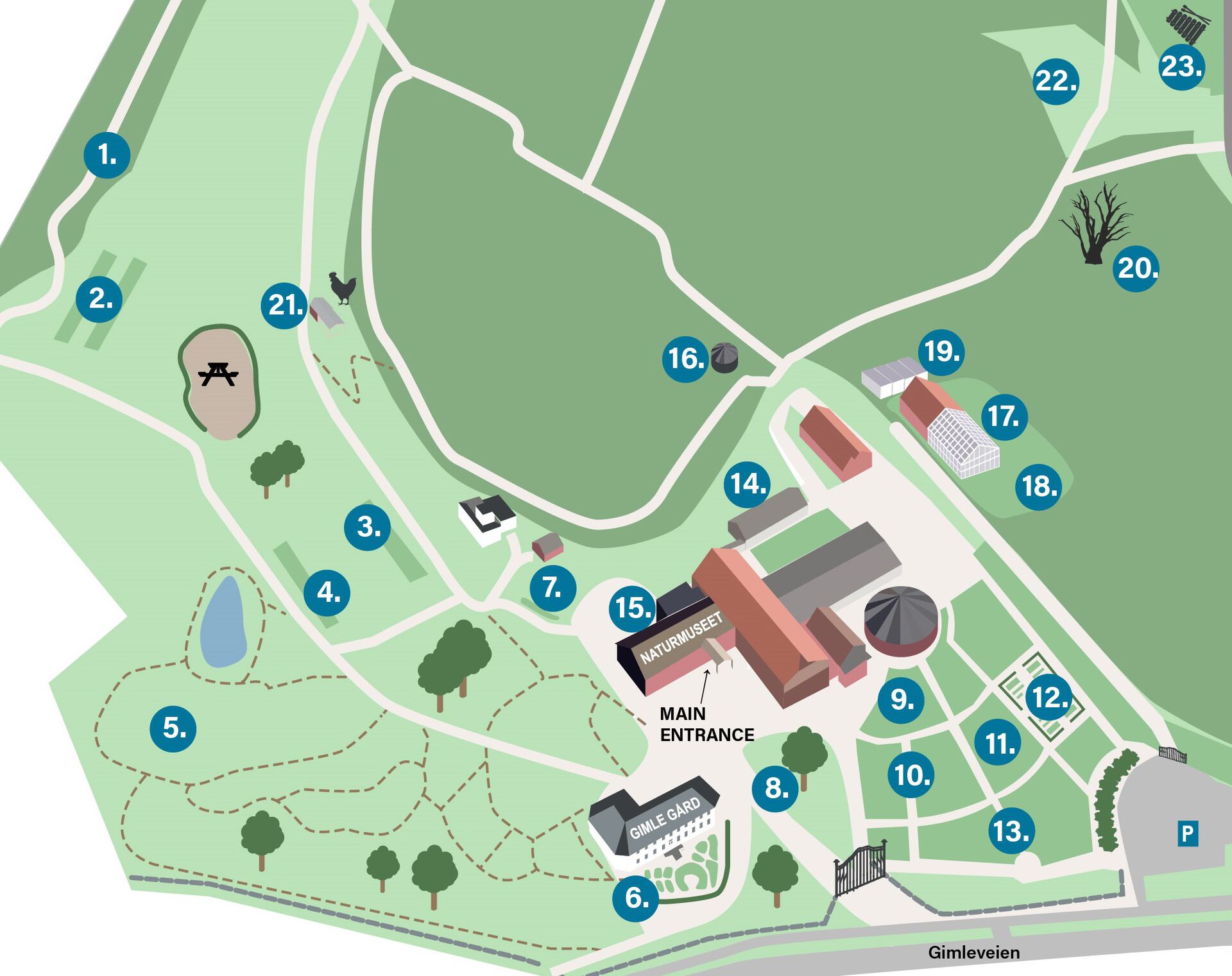We want to focus on ferns because they are often overlooked despite being one of the oldest plant groups on Earth. In fact, fossilized ferns as old as 383-393 million years have been found!
Above ground, everything is leaves
Ferns constitute one of the major groups of today's land plants. Except for mosses, all land plants, including ferns, consist of three basic parts:
Roots - which absorb water and minerals from the soil
Stem - which transports water and minerals from the root to the leaves
Leaves - which perform photosynthesis and produce nutrients
The stem in all Norwegian fern species is underground and is therefore called a rhizome. On the rhizome, there are thin roots called rhizoids. This means that everything you see above ground is actually individual leaves!

Neither seeds nor flowers
Ferns do not produce seeds; they existed on Earth long before the 'seed evolution.' Since only flowering plants produce seeds, ferns do not flower. So, how do ferns spread? Well, they spread using a kind of powder called spores.
The spores are on the leaves
On the fern, the spores are clustered in small groups called sori (spore clusters). Sori are often seen as small dots on the underside of the leaves, but in some species, they can be located on separate brown parts of the leaf, or on separate brown, spore-bearing leaves.
Microscopic parents
When the spores land on the ground and begin to germinate, they do not directly develop into a new fern. This is because the spores do not contain a "plant embryo," as seeds do. Instead, the spore will germinate into a flat, heart-shaped, leaf-like structure called a prothallus - this is difficult to detect in nature because it is so incredibly small.
It is these tiny prothalli that produce fern gametophytes. In most fern species, each prothallus will produce both egg and sperm cells. With the help of water, the sperm cells can swim to the eggs and fertilize them. After fertilization, a new fern will grow from the gametophyte. Once the young fern is capable of obtaining nutrients on its own, the gametophyte dies.
Ferns in Norway
Of the approximately 10,000 species of ferns worldwide, we have 47 in Norway. Most of them are found in wet and shady environments, but some thrive best on rocks or in mountain crevices.
Some species are very common and almost behave like 'weeds', while others are very rare.
Some ferns are also protected, which means it is illegal to pick or harm them.

Protected ferns in Norway
We have several protected ferns in Norway. In this bed, we want to make room for some of them so that we have a backup in case the species were to die out in the wild.

1. Conifers arboretum, 2. Dahlia, 3. Perennials, 4. Peonies, 5. Old park, 6. Historical Rose Garden, 7. Fern collection, 8. Roch exhibition, 9. Modern Roses, 10. Theme gardens, 11. Millennium Garden, 12. Monastery Garden, 13. Roses of Southern Norway, 14. Cacti House / Exhibition greenhouse, 15. café, 16. Cabin, 17. Glasshuset/Production Greenhouse, 18. Plant production grounds, 19. Office module, 20. Protected oak, 21. Chicken coop, 22. Wildflower meadow, 23. Music instruments
-beskjort.jpeg)
